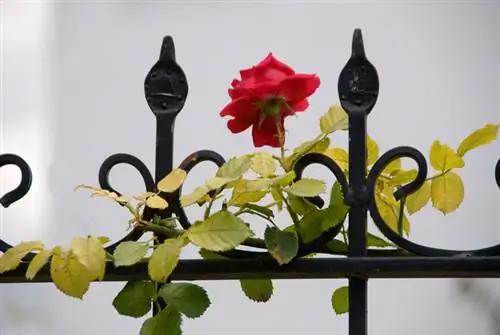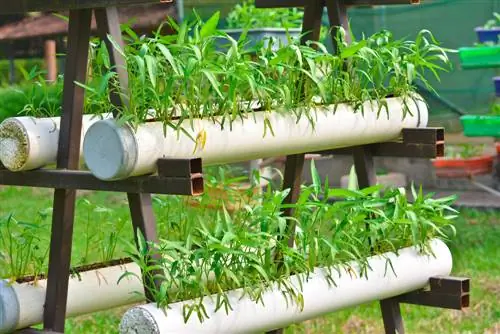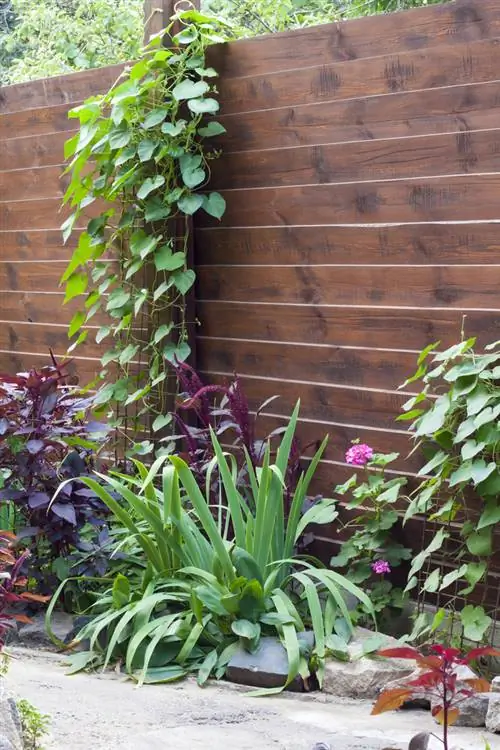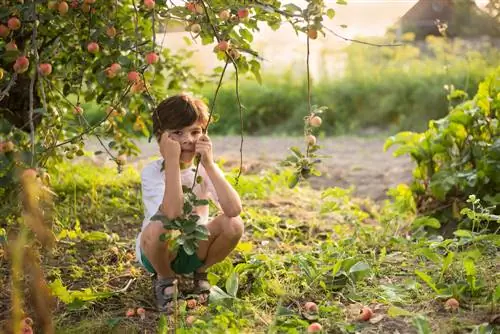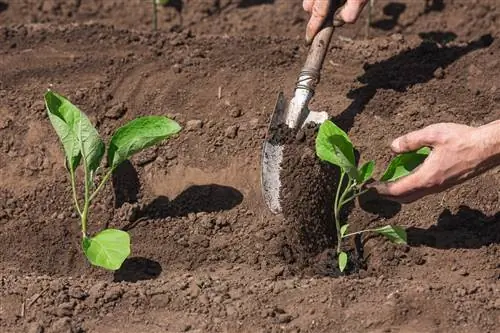- Author admin [email protected].
- Public 2023-12-16 16:46.
- Last modified 2025-01-23 11:20.
Although roses are considered quite capricious and difficult to care for, as a balcony gardener you don't have to do without the most noble of all flowers. In addition to a good choice of location, the success of your rose cultivation depends above all on correct, species-appropriate care. You can find out what you should pay attention to in the following article.
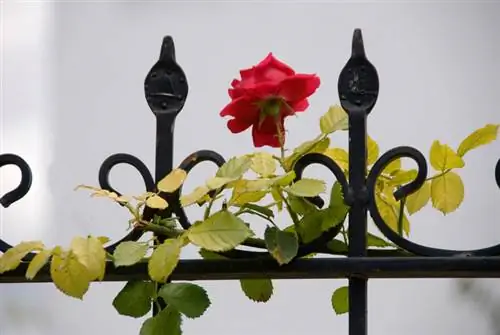
How do I properly care for climbing roses on the balcony?
For the successful care of climbing roses on the balcony, a bright, airy location should be chosen, a pot made of natural material such as terracotta or clay, the root ball depth as deep as possible and regular fertilization with slow-release fertilizer and liquid fertilizer from April to July.
Choose a location that is airy and not too hot
Many balcony plants feel particularly comfortable in sunny and sheltered locations - but not climbing roses. Like almost every rose, these need a place that is as bright as possible but also airy. The sensitive plant does not tolerate full sun or excessive heat, which is why it is best to plant climbing roses on a balcony facing west or east.
The brighter the location, the lighter the flower color you should choose
By the way, the rule of thumb is: for a sunny and therefore hot balcony, you should choose climbing roses with flowers that are as bright as possible - white, cream, yellow or light pink. These varieties tend to be less sensitive to heat compared to the darker colors.
Climbing roses like cool feet
Because roses are quite sensitive to heat, you should provide their roots with sufficient cooling. For this purpose, you can line the planter with a special bubble wrap, which also has the effect of additional winter protection, and if possible, choose a pot made of a natural material such as terracotta or clay. The moisture can evaporate to the outside and thus has a cooling effect.
Plant pot should be as high as possible
Like all roses, climbing roses also form a deep taproot, which is why the planter should be as high as possible - at least 50 centimeters, preferably more - and should taper downwards.
The right fertilization for abundant flowers
Roses are real heavy feeders and therefore need to be fertilized regularly, especially if they are grown in pots. Ideally, you enrich the substrate with a good long-term fertilizer (€10.00 on Amazon) when planting and every time you repot it and then supply the plant with a liquid rose fertilizer every 14 days between April and July.
Tip
If you are looking for suitable roses for the balcony box, we recommend unrooted dwarf roses. These do not have very deep roots and can therefore thrive well in confined spaces. However, you should not plant more than three specimens in a balcony box.

